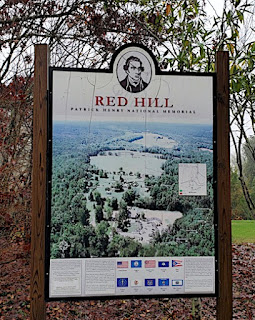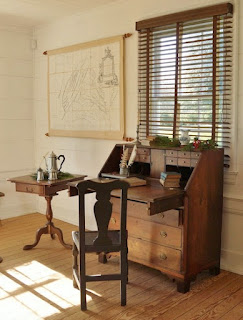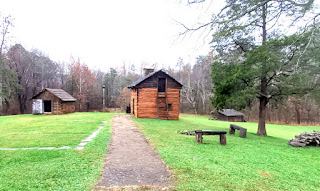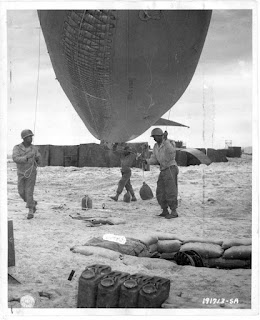Even though Virginia is rife with cities that fit all the criteria, the city of Lynchburg and environs remain standouts. The city, 30-minutes east of the spectacular Blue Ridge Parkway entrance, dates from a 1757 James River ferry established by John Lynch. www.lynchburgvirginia.org
Craddock-Terry and Company, a wholesale footwear distributer, was founded in 1888. Thirteen-years later the resulting shoe factory became the first south of the Mason-Dixon Line. Today the Craddock-Terry Hotel is a themed boutique hotel that incorporates elements of the original structure with touches such as wooden shoebox breakfast delivery, luxury linens, Fitness Center, parking and WIFI. The Craddock-Terry is ideally situated for touring the city and venturing beyond. www.craddockterryhotel.com
An excellent way to explore the area is by chronologically following the lives of those who lived there and significant events that took place there. The sites here are of exceptional historic significance and provide a snapshot of ideas, events and individuals that shaped the American culture and resonate today.
A tour includes 30 locations and begins in the Visitor Center with interactive museum exhibits and a 12-minute video, “Voices of Liberty”. His 2-room home is reconstructed on the original foundations. His law office, a separate structure, had been an overseer’s house and contains several items he owned. On display in the home is the chair in which he died.
In 1799 there were 67 enslaved workers. The estate’s Quarter Place Trail relates the story of the African American presence and includes a slave cabin reconstructed from salvaged materials from slave cabins and an African American cemetery with many marked graves. Red Hill offers a unique and evolving glimpse into the life of the enslaved. This is a do not miss site. www.redhill.org
Thomas Jefferson inherited the 4,819-acre Poplar Forest plantation in 1773. It would serve as his retreat until he could no longer travel in 1883. He began constructing the octagonal house in 1806 with architecture that combines European, Renaissance Palladian and Virginia elements. The single-story mansion contains a central, 20-ft., cube with 4 octagons encircling it. Light enters via a 16-ft. skylight. All of the working areas are one level below and it is there that the enslaved’s story is interpreted.
There were 90-100 slaves at Poplar Forest. Skilled slaves completed a large amount of the work on the mansion. James Hemings was solely responsible for the interior woodwork and the roof. Hannah, born at Monticello, served as the cook from 1809-23 and her story is related in the 1700s “modern” kitchen. A 23 site walking tour includes two octagonal privies, a slave quarter exhibit, Overseer’s House and 1857 Slave Dwelling. Note: There is no evidence that Sally Hemings ever visited Poplar Forest. www.poplarforest.org
The 223.92-acre Booker Taliaferro Washington National Historic Site is on the site of his original home. He was born in 1856 on the Burroughs family tobacco plantation and was freed here in 1865 with the reading of the Emancipation Proclamation. He opened Tuskegee Normal School in 1881 with 30 students and went on to become a statesman, educator, diplomat and prominent African American Leader. The .25-mile Plantation Trail winds through the farm areas and showcases the smokehouse, horse barn and replica kitchen cabin. Washington’s mother Jane was the plantation cook and he lived in the Kitchen Cabin. #BookerTWashington
On June 6, 1944 37 boys from Bedford, VA were assigned to the 116th Infantry and 31 began the journey to Omaha Beach as part of the D-Day invasion. Of the 26 who were part of the first wave, 16 were killed and 4 wounded almost immediately. An additional 3 were presumed dead and 1 died later that day. As a result Bedford bore the largest per capita D-Day loss. On June 6, 2001 the 50-acre National D-Day Memorial was dedicated to all those who were part of the invasion and to honor those who never returned.
The centerpiece of the memorial is a sculptural diorama of the landing of the Allied soldiers and their efforts to scale the cliffs. Bronze necrology tablets encompass Elmon Plaza and are etched with the names of the 4,413 soldiers killed. Every aspect of the memorial has significance including sand, from Omaha Beach, in the invasion tableau. A 44-foot tall arch, inscribed with the operation’s code name Overlord, and reflecting pool are focal points.
Of note is a reference to the 320th Barrage Balloon Battalion, the sole African American combat unit to land on D-Day. The balloons were manned by 5 men and hovered between the beach and German dive-bombers. To protect the allied forces. West Philadelphia’s Corporal Waverly “Woody” Woodson Jr., was a 21-year old medic, a member of the 320th Barrage Balloon Battalion, died in 2005.
Because of its age and location Lynchburg has always stood at the forefront of historical events and current realities and getting in touch with the past is a great way to reboot your travel experiences. All of the listed sites adhere to health protocols. Call ahead for hours, days of operation and COVID updates. #visitlynchburgva











































No comments:
Post a Comment